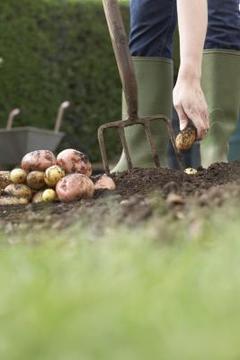
Are they the “Devil’s food”?
My list garden fables, those bits of wisdom your mother, neighbor and best buddy shared (and you believed and implement), seems to be ever growing. Who knew there were so many gardening myths out there?!
MYTH: Peonies won’t bloom if you move them
TRUTH: Peonies can be moved and transplanted. Best time is in the Fall, and only 2 deep. Ancient Greeks claimed that peonies had magical properties, and if you were seen near the plant in daylight, especially if you were trying to dig it up, a woodpecker would peck out your eyes. I’ve moved my peonies before and I still have my eyes.
MYTH: Watering in the middle of the day will damage the plants
TRUTH: There’s no evidence that water droplets cause sunburn or scorch the foliage. The diffused rays of the sun are not powerful enough to cause burning. If it were true that water droplets burned leaves, farmers would encounter huge losses after each daytime rainstorm. In fact, lawn care professionals often cool turf by spritzing water over the foliage during the hottest part of the day. In general, the best time to water most garden plants is early in the morning because of higher municipal water pressure, a lower evaporation rate, and the potential to reduce foliar diseases that often occur in overly moist situations. But watering midday will not harm your plants.
MYTH: Adding sugar to the soil will make tomatoes sweeter
TRUTH: Tomatoes don’t get their sweetness from the soil. The type of tomato, as well as plant photosynthesis, determine the flavor of the fruit (or is it vegetable?). The sugar content is most likely predetermined in the plant’s genetics. (Note from author: Just curious do you add salt or sugar to tomato slices when you serve them?)
MYTH: Plant potatoes only on Good Friday
TRUTH: The truth is potatoes should be planted in the spring as the soil begins to warm, which depending on what zone you live in might be as early as Good Friday. However, Good Friday occurs at different dates in March and April in any given year and potatoes were never mentioned in the Bible. For reasons I couldn’t find, at one time they were called the Devil’s Food, so the Irish would plant them on Good Friday to deter evil.
MYTH: Baking soda cures black spot
TRUTH: Although it works fairly well for powdery mildew, baking soda is not effective on black spot. Instead try mixing one part milk with two parts water and then spray affected foliage once every week or two, before black spot becomes a serious problem. This solution can also help control powdery mildew. Don’t use it on edibles, since milk sours.

